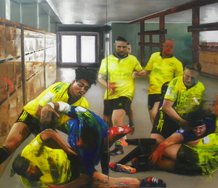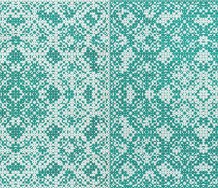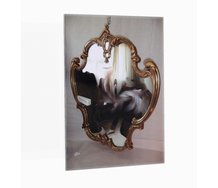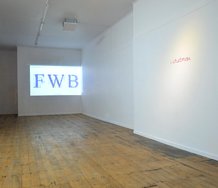Sophie Violet Gilmore – 17 March, 2015
It seems that the way the artworks look isn't really their main point. Rather it is in the external circumstances of their existence, the conditions of their presence in the gallery and the way they interrogate the value which the gallery confers on its contents, that their significance lies. While the individual objects have certain detail, once the initial glimpse of their presence becomes concrete, the act of viewing itself is rendered almost redundant.
Can a piece of art be called an “artwork”, when there is very little “work” evident in the material form of a piece, but instead an intangible experience of intellectual labour undertaken by the viewer, perhaps as much as by the artist? In his exhibition Draft Copy Auckland based artist Patrick Lundberg presents the achievements of his year as Francis Hodgkins Fellow, displaying a series of twelve philosophically inclined works. The viewer is given the disconcerting sensation of walking into a gallery which is hazardously close to emptiness, with only clusters of randomly arranged, physically minute spheres and cylinders to orientate them, allowing for an experience of thoughtful reflection or reactive frustration or a mixture of both.
These minimalist works are all entitled, not surprisingly, No Title. With a clear interest in conceptualism (or what New Zealanders seem to like referring to as “post-object art”, particularly fitting in this case), Lundberg explores a plethora of themes in Draft Copy including the relationship between the gallery and the artwork, how the act of installation and the space of the gallery draws meaning from the object, the notion of an artwork as a special kind of object, and the boundary between painting and sculpture (the objects, mounted on the wall, are three-dimensional - yet still possess a sense of flatness). While the white gallery wall is usually employed as a kind of non-space, useful for its seeming inability to contaminate the meaning of the art displayed, the void-like whiteness of the gallery (perhaps the only place where a void can be white) is utilised as an important feature of Lundberg’s work; it is the spatial location which gives form to the small objects Lundberg displays.
The individual shapes themselves, composed mainly of resin and acrylic on wood and clay - no more than 16 objects per work, no less than 12 - are painted in a variety of colours and detailed with lines or shading. The title of the exhibition, Draft Copy, is elucidated by the seemingly random arrangement of the forms on walls throughout the small gallery, or, in one case, on the four corners of an antechamber (involving a more complex or self-reflexive use of wall/space).
The artworks can be positioned in any way, in any space, and work to the same effect. The physical process of installation entailed in this “drafting” is evidenced by the pencil markings measuring the position between each object. The role of contingency in the creation of the artwork’s meaning is further substantiated by a single orb in the floor below one work. It is impossible to say whether it was placed there by purpose, to further complicate the notion of the gallery as the sole spatial determinant of the artworks, or whether it simply fell off. The orbs themselves appear as tiny planets floating in the empty universe of the gallery, perhaps reflecting on the nature as a microcosm of systems within the macrocosmic system of culture (and the individual artwork as a microcosm contained within the gallery-macrocosm).
But metaphors like this one only account for the experience of the exhibition to a limited degree. It seems that the way the artworks look isn’t really their main point. Rather it is in the external circumstances of their existence, the conditions of their presence in the gallery and the way they interrogate the value which the gallery confers on its contents, that their significance lies. While the individual objects have certain detail, once the initial glimpse of their presence becomes concrete, the act of viewing itself is rendered almost redundant: visually scrutinizing the works does not enable greater comprehension; their mechanism is, for the most part, mental and invisible.
Certainly, the artworks have a measure of form and structure; that measure just happens to be very small. It is interestingly ironic (whether intentional or not) that an artist seemingly loaded with such a wealth of ideas has chosen to present them through the smallest and most discreet objects possible. But this is possibly the most impressive aspect of the exhibition: that it makes what is so (physically) little mean so (conceptually) much.
Sophie Violet Gilmore
 Advertising in this column
Advertising in this column Two Rooms presents a program of residencies and projects
Two Rooms presents a program of residencies and projects



This Discussion has 0 comments.
Comment
Participate
Register to Participate.
Sign in
Sign in to an existing account.